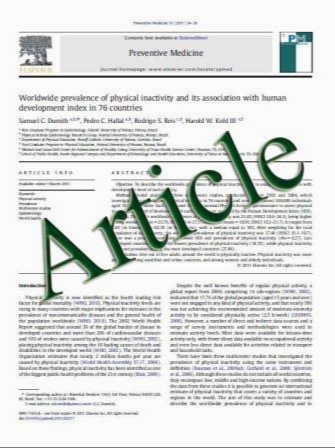Assessment of accuracy of immediate blood separation method: a novel blood analysis strategy
- نوع فایل : کتاب
- زبان : انگلیسی
- مؤلف : Kunio Nakayama Kanehisa Morimoto
- چاپ و سال / کشور: 2011
Description
Objectives This study assesses the accuracy of the immediate blood separation method, a novel blood sampling strategy that enables blood analysis in any possible location. Methods We conducted a cross-validation study between data from immediate blood separation and conventional methods. During the annual medical examinations in 2006 of a company located in an Osaka suburb, blood was drawn from workers (n = 256; males 200, females 56) by puncturing their middle finger as well as venipuncture of the antecubital vein, by medical personnel. The following nine parameters were evaluated by autoanalyzer: aspartate aminotransferase (AST), alanine aminotransferase (ALT), c-glutamyl transpeptidase (cGT), triglyceride, total cholesterol, high-density lipoprotein (HDL) cholesterol, urea nitrogen, uric acid, and creatinine. Results After comparing data from the two methods using correlation analysis and regression analysis, we found a close R2 value (coefficient of determination) relationship that ranged from 0.996 to 1.000 for each item. The R2 value was 0.998 for Log AST, 0.997 for Log ALT, 0.999 for Log cGT, 1.000 for Log triglyceride, 1.000 for total cholesterol, 0.999 for HDL cholesterol, 0.998 for urea nitrogen, 0.999 for uric acid, and 0.996 for creatinine. Relationship was satisfactory for all nine items tested. Conclusion Our results prove the reliability of data from the immediate blood separation method in an occupational health setting. The method enables self-testing by medically unskilled people, which is an important process to prevent lifestyle-related diseases.
Environ Health Prev Med (2011) 16:1–5 DOI 10.1007/s12199-010-0155-0 Received: 3 April 2009 / Accepted: 4 May 2010 / Published online: 9 June 2010


